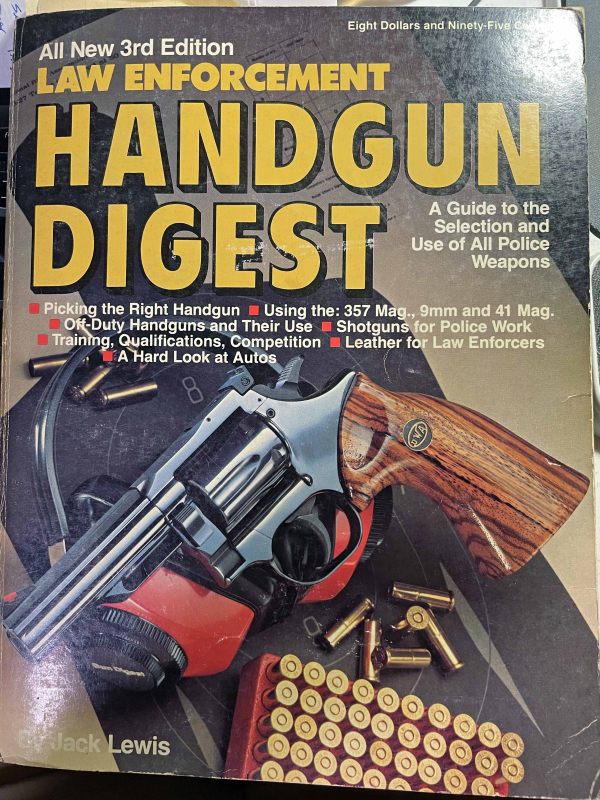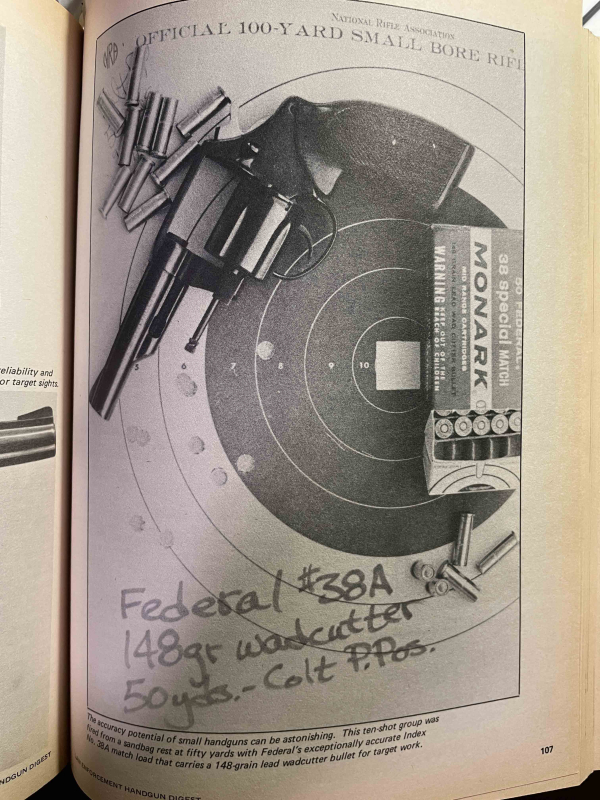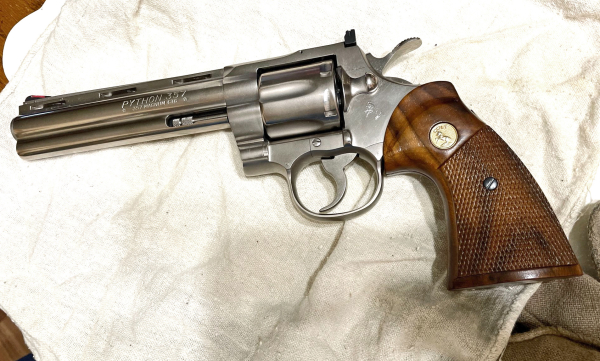
The book from which the cover image was taken shows a copyright of “MCMLXXX – Charger Publications and DBI Books.” It was from books like this I got what passed for a law enforcement shooting education, aside from basic academy – which I didn’t get to attend for fourteen months after swearing-in.
I was an avid reader of several periodicals, including GUNS, Shooting Times, Guns & Ammo, Gun Word, and what I came to know as “specialty publications,” including “Annuals.” These predated American Handgunner – a really big deal because most magazines were generalist publications. There was riflery, shotgun sports, hunting, reloading and – occasionally – handgun content. They also predated Combat Handguns, a publication I wrote for a few times.
Did the gun magazines have an impact? Oh, yes. I learned everything I learned of shooting a handgun from them, having no formal instruction at all until cop school. I carefully tried to emulate the posture and grip of the people pictured in the articles.
How did that work out?
Not well.

Adult learning principles include learning styles – visual, auditory, kinesthetic. Most adult learners have a couple of preferences of the three – “I can see what you’re saying and I can feel what you’re saying … but often I don’t really hear what you’re saying.”
Sort of like that …
I was stuck with the visual mode and attempting to model what I saw in the images. When the images were a bit at odd with the words, it became a problem.
That’s why when we meet new people at the range who tell us, “I (have) been around guns all my life” or “I learned how to shoot in the (fill in military service, cop service here)” or “I hunted every year with Uncle Stan,” it gives us pause.
My dad did his best to teach me to shoot using an old, long barrel 22 rifle and a shotgun. But he just never could shoot a handgun.

Learning the way I learned took a long time. What’s that got to do with tactics?
That’s how many are learning tactical skills today, except they’re armed with internet videos made by content providers of uncertain expertise. While some are quite good, others are questionable.
The answer isn’t to stop studying. Keep on, but be ready to question everything – and to be questioned by others.

The revolver shown isn’t the first centerfire handgun I owned – but it’s an analog purchased a decade or so later by a brother-in-law upon whom I had an influence. Why did I buy mine?
The gun books said it was a premium revolver. It is. Would I start with it today? No. I could recommend it to him as a fine shooting revolver.
But I learned more about shooting a handgun from using a loaned Colt Frontier Scout 22 than I ever learned from the big Colt. A lot of information got filled in by shooting the (then-new) 1978 S&W Model 60 Chief’s Special I bought for my first backup gun. With its tiny sights and stiff DA pull, it was all I could do to stay on the silhouette at 25 yards – at first.
Years later, I shot the Scrambler at Gunsite with a Ruger LCR. I was surprised at the hits I was making, as was Gunsite Instructor-Retired USBP Ed Head (RIP). I couldn’t have done that without the practice I’d had over decades with small frame DA revolvers.
There’s no quick way to proficiency and gear’s not the answer.
— Rich Grassi